Proserpinus vega
(Dyar, 1903)
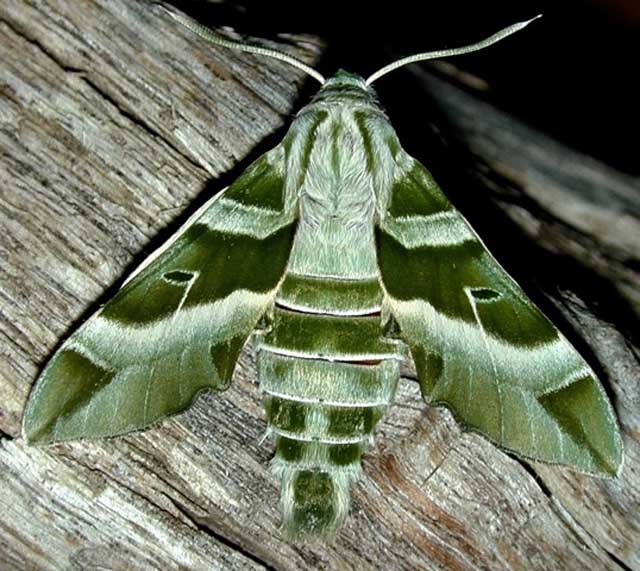
Proserpinus vega, southeastern Arizona, courtesy of Michael D. Van Buskirk.
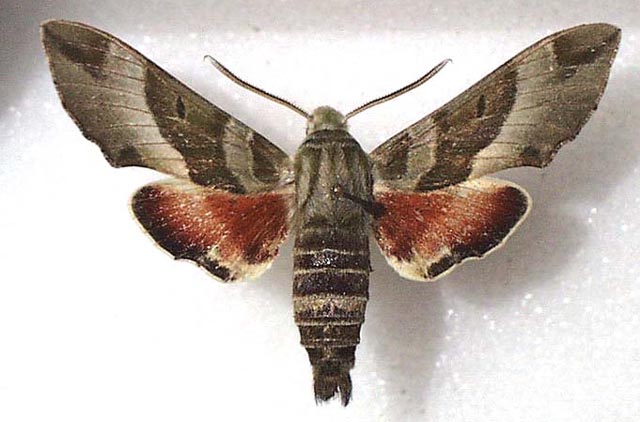
Proserpinus vega, Arizona, courtesy of Bruce Walsh.
This site has been created by Bill oehlke.
Comments, suggestions and/or additional information are welcomed by Bill.
TAXONOMY:
Family: Sphingidae, Latreille, 1802
Subfamily: Macroglossinae, Harris, 1839
Tribe: Macroglossini, Harris, 1839
Genus: Proserpinus Hubner, [1819] ...........
Species: vega Dyar, 1903
|
DISTRIBUTION:
The endangered Vega sphinx, Proserpinus vega (Wing span: 2 3/8 - 2 5/8 inches
(6.1 - 6.7 cm)), flies in Arizona, New Mexico, and Texas south into Mexico.
The upperside of the forewing is green-gray with darker green at the base, median area, and tip. The upperside of the hindwing is
red-orange with a black outer margin and a tan patch on the inner margin.
Jim Tuttle writes, "P. vega has a very large and dark basal patch as the FW meets the thorax that is lacking in terlooii.
There are also three prominent longitudinal stripes on the thorax of vega that are lacking in terlooii."
FLIGHT TIMES:
Proserpinus vega adults fly as a single brood in August.
Adults fly during the afternoon, nectaring from flowers.
ECLOSION:
Pupae probably wiggle to surface from subterranean chambers just prior to eclosion.
SCENTING AND MATING:
Females call in the males with a pheromone released from a gland at the tip of the
abdomen.
EGGS, LARVAE, PUPAE:
Eggs hatch about 10 days after the female deposits them on the host plant,
and the newly-hatched caterpillars eat their eggshells. Larvae probably feed on (Onagraceae) including evening primrose (Oenothera), gaura (Gaura), and willow weed
(Epilobium). Image courtesy of Paul Opler. | 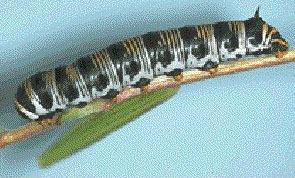 |
Ole Breum of Denmark was very kind to send the following images taken by his daughter Agnete:
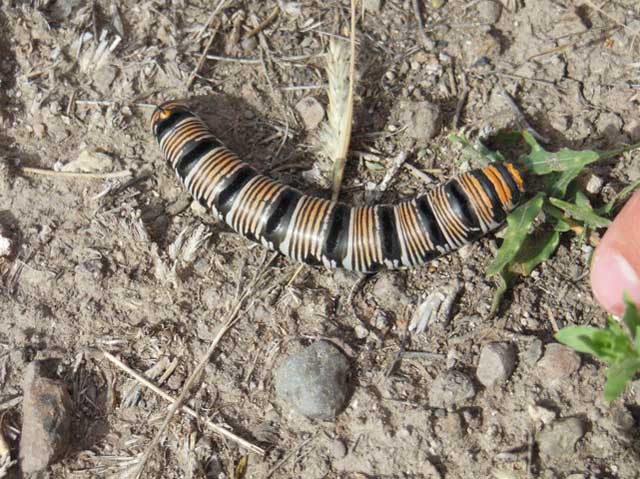
Proserpinus vega fifth instar, Fort Davis, Jeff Davis County, Texas,
October 16, 2012, courtesy of Agnete and Ole Breum.
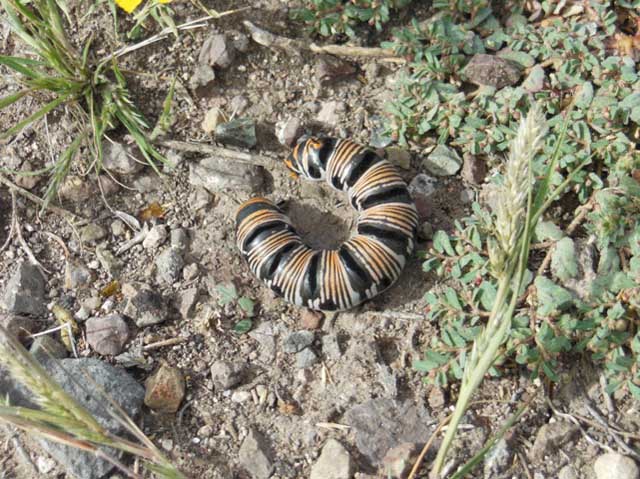
Proserpinus vega fifth instar, Fort Davis, Jeff Davis County, Texas,
October 16, 2012, courtesy of Agnete and Ole Breum.
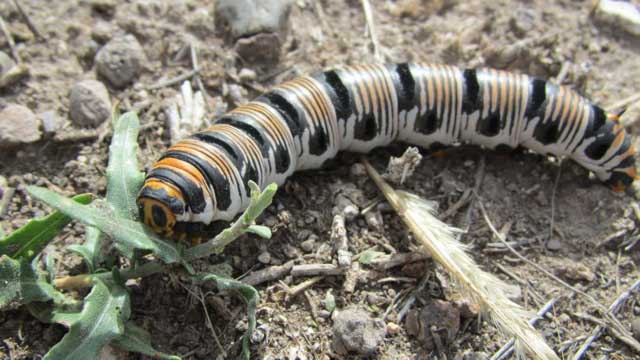
Proserpinus vega fifth instar, Fort Davis, Jeff Davis County, Texas,
October 16, 2012, courtesy of Agnete Moller Breum.
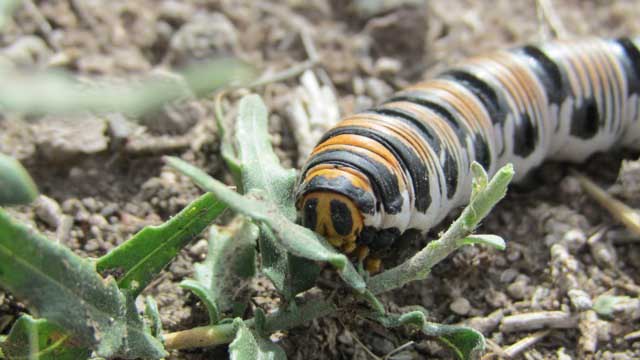
Proserpinus vega fifth instar, Fort Davis, Jeff Davis County, Texas,
October 16, 2012, courtesy of Agnete Moller Breum.
Mature larvae pupate and overwinter in shallow underground burrows.
Use your browser "Back" button to return to the previous page.
Goto Main Sphingidae Index
Goto Macroglossini Tribe
Goto Central American Indices
Goto Carribean Islands
Goto South American Indices
Goto U.S.A. tables






